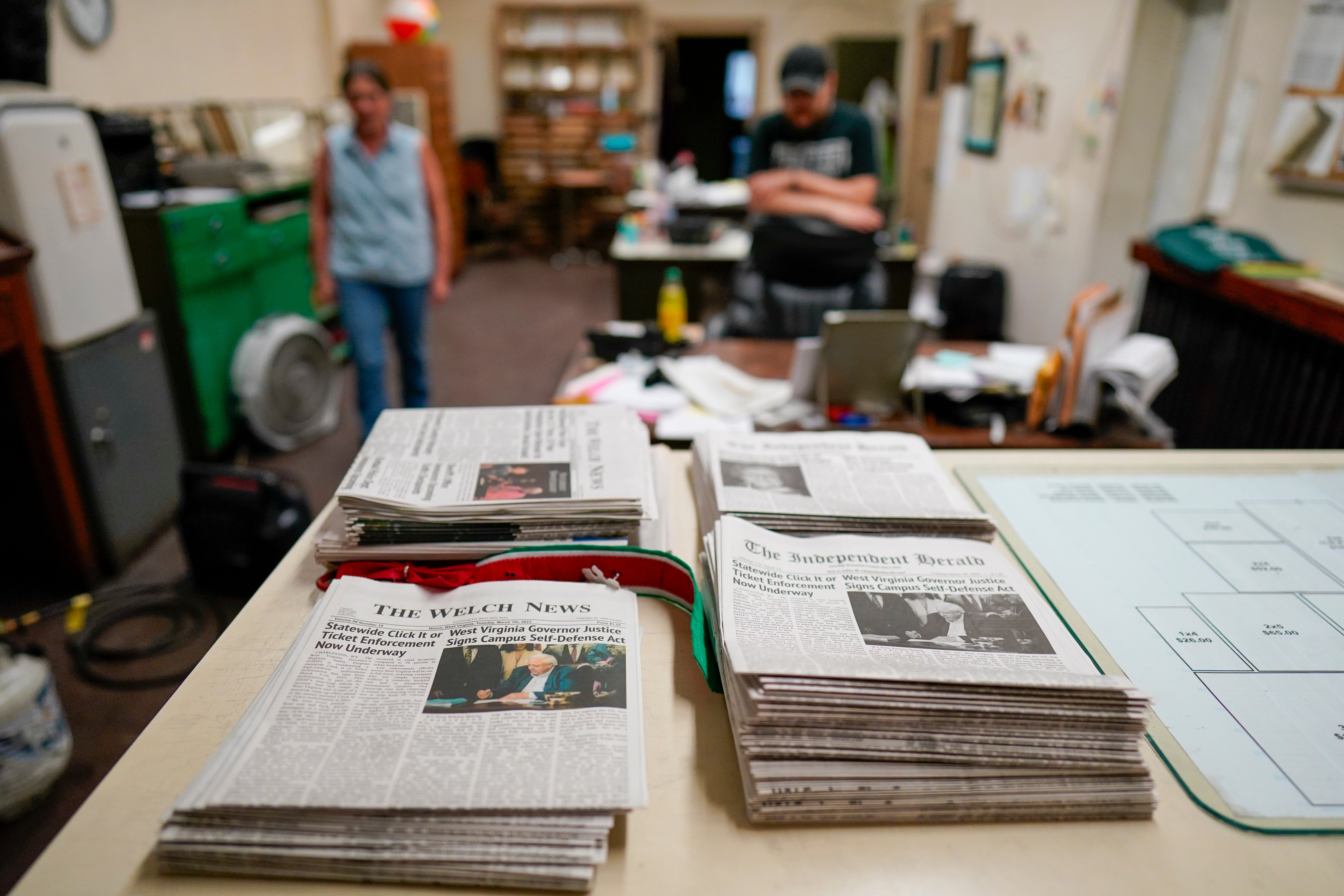Local news sources are still drying up, but there's growth in digital sites in metro areas
Newspapers in the United States closed at the rate of more than two per week during 2023

Your support helps us to tell the story
From reproductive rights to climate change to Big Tech, The Independent is on the ground when the story is developing. Whether it's investigating the financials of Elon Musk's pro-Trump PAC or producing our latest documentary, 'The A Word', which shines a light on the American women fighting for reproductive rights, we know how important it is to parse out the facts from the messaging.
At such a critical moment in US history, we need reporters on the ground. Your donation allows us to keep sending journalists to speak to both sides of the story.
The Independent is trusted by Americans across the entire political spectrum. And unlike many other quality news outlets, we choose not to lock Americans out of our reporting and analysis with paywalls. We believe quality journalism should be available to everyone, paid for by those who can afford it.
Your support makes all the difference.Newspapers in the United States closed at the rate of more than two per week during 2023, but a burst of activity among digital entrepreneurs illustrated some tiny shoots of growth in what has become a desert-like climate for local news.
A total of 127 newspapers closed last year, while the 81 digital sites gained was the most in any year since the Medill Local News Initiative at Northwestern University began measuring that activity in 2018, and possibly the most ever.
“It shows that there are some entrepreneurs and innovators out there,” said Tim Franklin, director of the Medill Local News Initiative.
One caution: digital news is still an area with a lot of churn. There were actually 212 new sites that started last year, including 30 that were former newspapers that converted to digital only, while 131 closed, making for the net gain of 81.
The big picture for local news remains tough
The big picture also remains ominous, as few of the factors that have led to the decimation of the local news industry have really changed. Advertisers and readers are still slipping away. More than 3,200 newspapers have closed since 2005, leaving roughly 5,600 remaining, Medill said. Nearly 2,000 newsroom jobs were lost in the last year alone.
“The local news crisis is snowballing,” Franklin said. “We see it in the expansion of news deserts, the unrelenting pace of closures and the loss of newspaper jobs.”
The list includes the Hinton Times in northwest Iowa, which closed after 28 years when its owners retired; the Northland Press outside of Brainerd, Minnesota, which ended after the death of its publisher; and the Tioga Tribune in North Dakota, whose editor left town.
Of the new digital sites, some 90 percent are located in metropolitan areas, servicing communities that had been seeing less coverage because of job losses at larger news outlets. In the Chicago area where Northwestern is located, Block Club Chicago offers hyper-local coverage to nearly two dozen neighborhoods, The TRiiBE is geared to young, professional Black residents and the Cicero Independiente reaches Latino consumers.
Still a need for news in rural areas
While that's good news for those communities, there's still an urgent need for news in rural areas, the report said. Using a metric that takes into account poverty and areas with only one news outlet, Medill placed 279 counties on its “watch list” of those at risk of losing local news altogether. That's up 22 percent from the previous year.
Medill also noticed an increased pace in newspapers changing ownership — 258 in 2023 compared to 180 the year before. A number of smaller companies are more active in acquiring papers, as opposed to a large chain like Gannett, leading to growth in companies like the Carpenter Media Group in Farmville, Virginia.
More of the digital start-ups that have opened in the past few years are nonprofit instead of profit businesses, said Zach Metzger, director of the Medill State of Local News Project. That eliminates the expense of printing and distributing newspapers, while offering greater flexibility in funding sources, he said.
___
David Bauder writes about media for the AP. Follow him at http://x.com/dbauder.